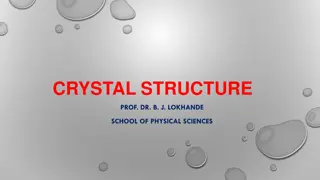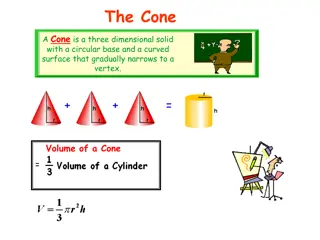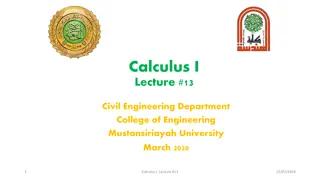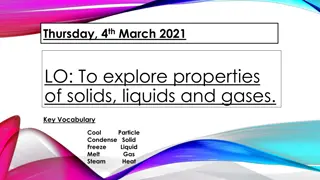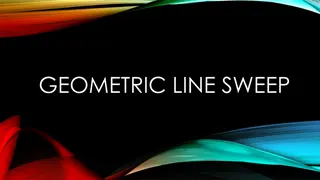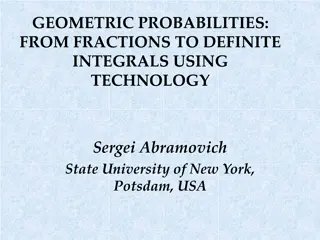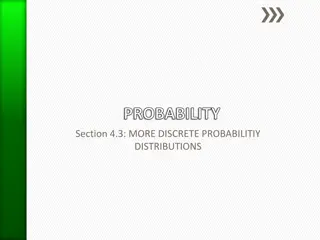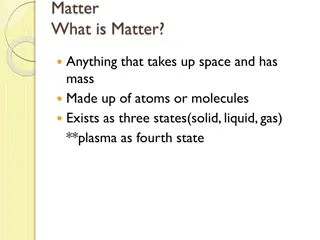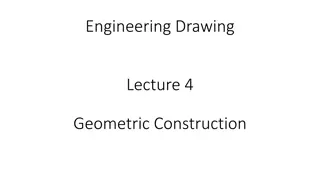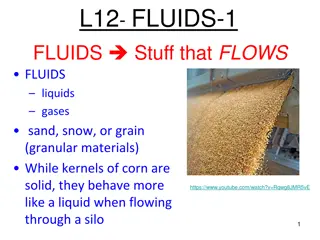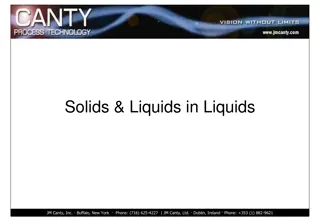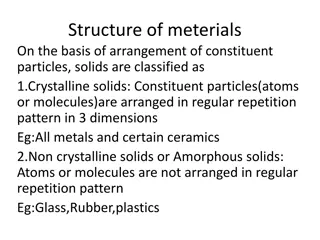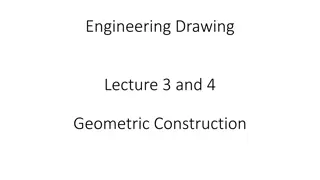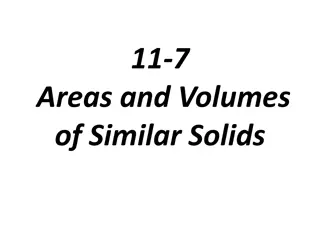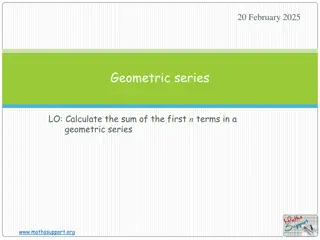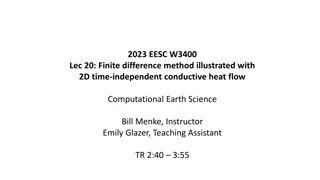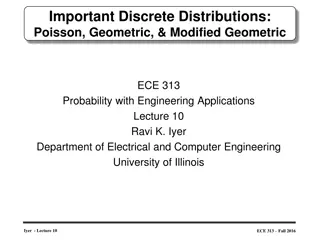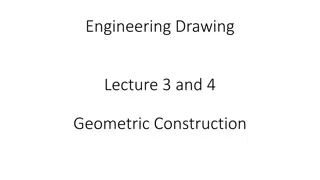Total Solids and Total Suspended Solids in Water
Learn about total solids and total suspended solids in water, including their definitions, implications on water quality and aquatic life, and factors affecting their levels. Total solids refer to matter suspended or dissolved in water, while total suspended solids are small solid particles that can
7 views • 12 slides
States of Matter: Solids, Liquids, and Gases
Matter is anything that occupies space and has mass, consisting of tiny particles like atoms and molecules. Solids have closely packed particles, liquids have less densely packed particles that can flow, and gases have spread out particles. Solids retain their shape, liquids take the shape of their
7 views • 11 slides
Crystal Structures and Types of Solids in Materials Science
Crystal structures in materials science involve the arrangement of atoms in solids, with examples of crystalline and amorphous solids like metals and glass. Explore concepts like energy packing, definitions of crystalline materials, unit cells, BCC and FCC lattices, HCP structures, and Miller Indice
13 views • 12 slides
Geometric Solids and Their Properties
Explore the concepts of cones and pyramids, including their volumes and surface areas. Learn how to calculate the volume of a cone or pyramid, find the surface area of their bases and lateral sides, and solve practice questions to enhance your understanding of these geometric figures.
4 views • 12 slides
Calculus I Lecture #13: Volumes of Solids and Solids of Revolution
Exploring the concepts of finding volumes of solids using integrals, by slicing solid objects with parallel planes and calculating cross-sectional areas. Examples include calculating the volume of a pyramid and a curved wedge. The method of solids of revolution using the disk method is also discusse
2 views • 12 slides
Properties of Matter: Solids, Liquids, and Gases
Dive into the characteristics of solids, liquids, and gases through engaging visuals and key vocabulary. Understand the behavior of particles in different states of matter and learn about the properties that define each state. Explore examples of solids, liquids, and gases with a focus on their uniq
2 views • 19 slides
Geometric Shapes through Visualization in Mathematics for Class 7
Explore the concept of visualising solids in mathematics for Class 7 students. Learn to associate 2D drawings with 3D shapes, visualize various solids, identify their properties, and develop skills in drawing sketches. The chapter covers learning objectives, recapitulation of shapes around us, intro
3 views • 35 slides
Geometric Line Sweep Algorithms
Geometric Line Sweep is a powerful technique where an imaginary line sweeps over points, performing geometric operations at each point. This method can find minimum distances between points, overlapping rectangles, and more. By sorting points and efficiently processing them, it can enhance performan
3 views • 10 slides
Overview of Wastewater Treatment Units and Processes
Screening units with screens and racks remove coarse solids, comminutors reduce the size of suspended solids, and grit chambers remove sand and metal fragments from wastewater to protect downstream equipment and processes. The floatation tank removes grease, while different designs of grit chambers
7 views • 15 slides
Wastewater Treatment Process Through Images
Screening devices and grit chambers play crucial roles in sewage treatment plants to remove coarse solids and suspended solids like sand and metal fragments. The aerated grit chamber helps separate organic and inorganic solids efficiently, ensuring the effectiveness of biological treatment and mecha
3 views • 9 slides
Platonic Solids: Shapes that Define the Universe
Delve into the world of Platonic solids, five unique geometric shapes that have fascinated mathematicians and philosophers throughout history. Discover the general characteristics of each solid - Tetrahedron, Cube, Octahedron, Dodecahedron, and Icosahedron - and unravel the ancient Greeks' profound
0 views • 27 slides
Platonic Solids: Shapes of Harmony and Elements
Explore the fascinating world of Platonic solids, 3D shapes with faces made of regular polygons, each representing a different element. Dive into the history, symbolism, and unique characteristics of the tetrahedron, cube, octahedron, and dodecahedron through their elemental associations. Discover t
5 views • 12 slides
Solids and Properties of Matter
Dive into the world of solids and properties of matter, from seating arrangements to classroom objectives. Discover the different phases of matter, investigate properties of solids, liquids, and gases, and explore the interactions between particles. Engage in hands-on activities and learning experie
3 views • 105 slides
Geometric Probabilities: From Fractions to Integrals
Delve into the realm of geometric probabilities with insights on how to transition from fractions to definite integrals, utilizing technology for enhanced learning experiences. Understand the significance of probability calculations in quantifying likelihood, incorporating geometric representations
1 views • 26 slides
Geometric and Poisson Probability Distributions
Explore the geometric and Poisson probability distributions, including criteria for geometric random variables, formulas, and practical examples. Learn how to calculate probabilities using the geometric distribution and apply it in scenarios like Russian Roulette and blood donor collection. Dive int
4 views • 13 slides
Overview of Proposed Changes in Producer Price Index Formulas
The U.S. Bureau of Labor Statistics is considering transitioning from a modified Laspeyres formula to a geometric Young formula for elementary indexes in the Producer Price Index (PPI). This proposed change aims to enhance the accuracy and economic relevance of price measurements by utilizing a geom
3 views • 25 slides
States of Matter and Kinetic Theory
Matter is anything that occupies space and has mass, existing in solid, liquid, gas, and plasma states. The states of matter depend on the arrangement and motion of atoms. Solids have fixed shapes, liquids take the shape of their container, and gases fill the volume of their container. The Kinetic T
1 views • 18 slides
Geometric Solids Volume Formulas Explained
Understanding the volume of geometric solids is crucial for various practical applications. Learn about different shapes like rectangular prisms, cylinders, cones, and spheres, along with their respective volume formulas. Dive into the concepts of diameter, radius, and height to master calculations
1 views • 13 slides
Geometric Construction and Geometrical Figures Lecture Images
Explore a series of informative images illustrating geometric construction, types of angles, triangles, and various geometric figures like squares, rectangles, rhombuses, parallelograms, and circles. Enhance your understanding of key geometric concepts with these detailed visuals.
3 views • 14 slides
Matter: Solids, Liquids, Gases, and Fluids
Matter exists in various states - solid, liquid, gas, and fluid. Solids have atoms closely packed, liquids have more freedom but still cohesion, gases have atoms spread out, and fluids flow like liquids or gases. Mass density characterizes matter based on atom proximity. Gas pressure results from mo
5 views • 22 slides
Vision-Based Particle Analysis Techniques for Solids and Liquids Measurement
Solids and Liquids in Liquids and Solids in Liquid Measurement are performed by JM Canty, Inc. Their innovative vision-based particle analysis techniques involve dynamic imaging with high-intensity light sources and cameras to measure particle size, shape, and concentration in various liquid systems
1 views • 22 slides
Solid State Chemistry: Principles and Classification of Solids
Solid State Chemistry (CHEM 422) explores the principles and concepts governing the synthesis, structure, bonding, reactivity, and properties of solid state materials. The course delves into crystalline vs. amorphous solids, highlighting categories like ionic, molecular, metallic, and covalent solid
5 views • 24 slides
Crystal Structure and Classification of Solids Based on Particle Arrangement
Solids are classified into crystalline and non-crystalline based on the arrangement of constituent particles. Crystalline solids exhibit a regular repetitive pattern in three dimensions, while non-crystalline solids lack such order. The structure of metals includes body-centered cubic (BCC), face-ce
5 views • 56 slides
Geometric Construction in Engineering Drawing: Lecture Highlights
Geometric construction involves creating primitive geometric forms like points, lines, and planes to define objects in space. The lecture covers the basics of 2D geometric primitives, such as points, lines, circles, and arcs. It explains the significance of points and lines in technical drawings and
2 views • 18 slides
Areas and Volumes of Similar Solids: Identifying Similar Shapes
the concept of similar solids through rectangular prisms and square prisms. Learn how to determine if two figures are similar and calculate the scale factor between them. Understand the relationship between corresponding areas and volumes of similar shapes. Practice finding the scale factor between
11 views • 6 slides
Geometric series
A geometric series involves the sum of successive terms in a geometric sequence. By understanding the formula and principles behind geometric series, you can efficiently calculate the sum of the first n terms. Explore examples and formulas to find solutions for different series, whether the common r
3 views • 15 slides
Finite Difference Method for Conductive Heat Flow in Solids
Illustrated with examples, the finite difference method is applied to analyze 2D time-independent conductive heat flow in solids. The conservation of heat energy, temperature variation in heat-conducting solids, and boundary conditions are discussed in detail. Emphasis is placed on solution techniqu
3 views • 65 slides
Geometric Sequences: Definitions, Examples, and Formulas
Delve into the world of geometric sequences with a comprehensive overview of definitions, key concepts, examples, and essential formulas. Explore the common ratio, differences between arithmetic and geometric sequences, find common ratios in given examples, and solve sample problems to solidify your
5 views • 24 slides
Sedimentation
Sedimentation is a physical treatment process that separates suspended solids from water using gravity. There are four types of sedimentation processes. Type I involves discrete settling of low particle concentrations, Type 2 is flocculant settling of higher solids concentrations, Type 3 is hindered
0 views • 12 slides
Total Solids in Water
Total solids in water, comprising both suspended and dissolved matter, can impact aquatic life and water quality. High levels of total suspended solids can lead to reduced oxygen levels and affect ecosystems. Factors influencing total suspended solids include flow rates, soil erosion, urban runoff,
23 views • 12 slides
Matter: Solids, Liquids, and Gases
This educational content covers the properties and characteristics of solids, liquids, and gases. It includes images and explanations about floating, changing states of matter, true/false statements, definitions, and questions related to natural materials, differences between solids and liquids, and
2 views • 7 slides
Applications of Poisson, Geometric, and Modified Geometric Distributions in ECE 313 Lecture
Explore the applications of important discrete distributions such as Poisson, Geometric, and Modified Geometric in electrical and computer engineering, as discussed in ECE 313 Probability with Engineering Applications Lecture 10 by Ravi K. Iyer. Topics include random variables, examples of geometric
5 views • 35 slides
Geometric Reasoning and Dynamic Constructions: Enhancing Learning Through Technology
Delve into the world of geometric reasoning and dynamic constructions in mathematics education. Explore the intersection of geometry, technology, and pedagogy to foster meaningful learning experiences. Session topics include geometric habits of mind, tools for reasoning, triangle constructions, and
2 views • 18 slides
Band Theory of Solids in Electronics
Delve into the Band Theory of Solids in electronics, where electron energy levels are organized into bands, distinguishing between valence and conduction bands in insulators, semiconductors, and conductors. Explore the impact of temperature, doping, and energy gaps on semiconductor behavior, and lea
0 views • 8 slides
Geometric Construction and Primitive Forms in Engineering Drawing
Explore the concepts of geometric construction, primitive forms like points, lines, planes, and solids, and how they form the basis for more complex geometric shapes in engineering drawing lectures. Learn about defining object positions in space, 2D geometric primitives, and the theoretical aspects
1 views • 18 slides
Substitutional Impurities in Solids by Marco Pieruccini
Explore the role of substitutional impurities in solids, focusing on doping of semiconductors and ion implantation. Learn about the impact of lattice damage and the thermodynamics of viscous liquids. Discover insights into escaping metastable states in implanted solids.
1 views • 8 slides
Infinite Geometric Series
Students will be able to find the sums of infinite geometric series with ratios having an absolute value of less than one. Learn how to determine whether an infinite geometric series has a sum based on the common ratio criterion. Explore examples to calculate the sum of infinite geometric series and
1 views • 6 slides
Materials: Conductivity of Solids, Liquids, and Gases
Explore the particle model of solids, liquids, and gases, learn how materials conduct heat energy, discover the uses of conductors and insulators, and understand the differences in heat conductivity between solids, liquids, and gases.
3 views • 15 slides
Crystalline Solids, Energy Packing, and Unit Cells: Exploring Solid-State Physics at Dattajirao Kadam College
Delve into the world of crystalline solids at Dattajirao Kadam College's Department of Physics, exploring the intricate structures of solids, energy packing, various types of solids, and unit cells. Understand the distinctions between crystalline and amorphous solids, the concepts of dense and non-d
1 views • 12 slides
Understanding Substitutional Impurities in Solids
Explore the role of substitutional impurities in solids for various applications like doping of semiconductors and ion implantation. Learn about the thermodynamics of viscous liquids and the mean-field specific pseudo-potential for exploring metastable states in implanted solids.
1 views • 8 slides


